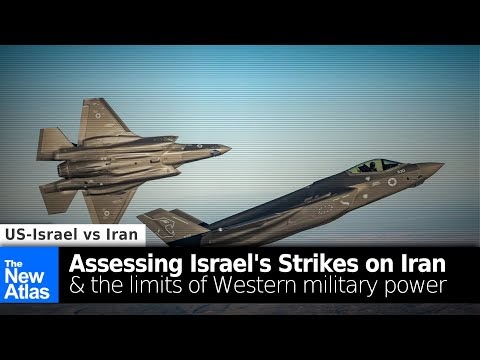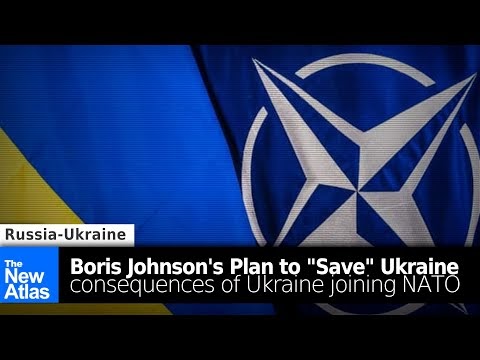January 24, 2024 (NEO – Brian Berletic) – Ukraine is losing the drone war. This isn’t a claim made by the Russian Ministry of Defense or by Russian state media, but rather the headline of an article appearing in Foreign Affairs magazine, written by former Google CEO Eric Schmidt who now heads a think tank, the Special Competitive Studies Project (SCSP), advising the US government regarding artificial intelligence and other emerging technology.
The article titled, “Ukraine is Losing the Drone War – How Kyiv Can Close the Innovation Gap With Russia,” makes a wide range of claims, from repeating unlikely narratives regarding astronomically high Russian losses, to admissions regarding Russia’s many and multiplying advantages over both Ukraine and its Western supporters. Schmidt’s narrative is contradictory, and the article ultimately fails to deliver a coherent explanation as to how Ukraine can actually “close the innovation gap with Russia.”
It is a mystery as to why Schmidt is even writing this article in the first place, not being a journalist or a politician, but rather a leader of the US high-tech industry. But the article demonstrates how even at the highest levels of political and industrial leadership in the US, there lies a fundamental misunderstanding of not only the ongoing conflict in Ukraine, but of the fundamental premise upon which all American foreign policy is built.
Why Ukraine is Losing the Drone War, and will Continue Losing
Schmidt’s article lays out a distorted account of the ongoing conflict in Ukraine, following familiar narratives found across the collective West’s media. This includes the notion that Ukraine initially “held the upper hand in drone warfare” and had managed to keep “Russian forces on the back foot.” Such conclusions are drawn by focusing solely on the trading of territory, and in particular, on Ukraine’s Kharkov and Kherson offensives in 2022.
However, because the Ukraine conflict is fundamentally a war of attrition, the true measure of Ukraine’s success or failure is measured in the loss of manpower and equipment versus its ability to regenerate forces, replace equipment, and replenish ammunition stockpiles. In all of these regards, Ukraine has been losing the war from the moment it began – some may even look back in hindsight and conclude the war was lost before it even began.
The collective West for decades developed a large, for-profit military industrial base. It focused on maximizing profits through the production of high-cost systems built in relatively small quantities, while eliminating extra manufacturing capacity for large-scale production that rarely if ever was necessary to sustain the West’s “small wars” following the collapse of the Soviet Union.
Russia, on the other hand, inherited the Soviet Union’s massive military industrial base, maintained certain aspects of it, modernized and expanded others, preparing for large-scale, high-intensity, protracted warfare within or along its borders.
From 2008, when US-armed and trained Georgian forces attacked Russian troops in the South Caucasus region, Moscow began preparing for a conflict by proxy with NATO it considered inevitable. From 2014, following the US overthrow of the elected Ukrainian government, it was almost certain that conflict by proxy with NATO would be fought in Ukraine.
From that point onward, Russia began building up the military industrial base required to fight and win a large-scale proxy war against a NATO-armed and trained Ukraine. Because Russia’s military industrial base consists of a large network of state-owned enterprises, a preference for purpose over profits prevailed.
Today, this fundamental reality is reflected in virtually every aspect of the fighting in Ukraine, from Russia’s advantage in quantity regarding low-tech artillery shells, to more advanced systems like main battle tanks, cruise missiles, and warplanes that both outnumber and outperform their NATO counterparts, to – perhaps especially – drones of all kinds.
Schmidt’s article admits that Russia is not only outproducing Ukraine in terms of drones, placing the number of drones produced monthly to around 100,000, but also admits Russia possesses drones Ukraine has no equivalent of. Schmidt singled out the Orlan reconnaissance drone and the Lancet kamikaze drone in particular.
Ukraine, however, has been provided with a large variety of drones produced across the collective West. It began the conflict with a number of much more sophisticated Bayraktar TB-2 drones manufactured by Türkiye. While these drones are formidable weapons, they are inappropriate for the battlefield in Ukraine, where they face Russia’s extensive integrated air defense network and Russia’s extensive array of electronic warfare (EW) capabilities.
Should drones equivalent to the Orlan and Lancet exist in sufficient numbers to provide to Ukraine, the inability to overcome Russia’s advantages in both air defenses and EW would still impair their use.
Schmidt, in fact, notes Russia’s EW capabilities as “superior,” capable of jamming and spoofing signals between Ukrainian drones and their operators. While Ukraine has been provided with EW capabilities as well, the collective West is admittedly years behind Russia in this field of expertise.
At one point, the article admits:
Most Western-supplied weapons have fared poorly against Russia’s antiaircraft systems and electronic attacks. When missiles and attack drones are aimed at Russian sites, they are often spoofed or shot down. U.S. weapons in particular can often be thwarted via GPS jamming.
While Schmidt spends the rest of the article discussing “winning the drone war,” he never actually articulates a coherent strategy in doing so.
He claims, “Ukraine will need to secure additional Western ammunition supplies,” without acknowledging the fact that such supplies do not exist, and will not any time in the foreseeable future because the production capacity to manufacture them in sufficient quantities does not exist.
Schmidt continues, suggesting, “Ukraine also needs antiaircraft and attack missiles to strike fast-moving airborne targets.” Just as with artillery shells, antiaircraft missiles were in short supply even before the conflict began in Ukraine, and have only dwindled further. If producing low-tech artillery shells in greater quantities will take the West years to do, producing more complex missile interceptors will take even longer.
Schmidt claims that, “Ukrainian startups are working around the clock to develop advanced drones that can resist spoofing and jamming.” Yet, this ignores the fact that many more Russians with far greater resources are working around the clock to develop better means of spoofing and jamming.
Ultimately, Schmidt’s “solution” to Ukraine’s losing drone war (and losing the war in general) is for “Kyiv’s allies” to sustain “financial and technical support.” He never explains how this can be done in a way matching or exceeding Russia’s own efforts to constantly expand its military industrial output in both quantity and quality. Russia began with and continues to maintain a headstart over Ukraine and its Western backers. Simply suggesting Ukraine needs more of everything doesn’t address the shortcomings that created these disadvantages in the first place, nor suggest any way of solving them.
Schmidt’s stated objective in the article is “neutralizing the advantages that Russia has gained.” The only actual way to achieve this would be to build a military industrial base capable of matching or exceeding Russia’s ability to research and develop new technology, and then mass produce and place this technology on the battlefield.
It would require the creation of massive state-owned enterprises able to subordinate profit to purpose, the creation of an education system able to supply a steady stream of the necessary human resources this expanded industry would require, and the ability to source raw materials and components from adjacent, likewise state-owned enterprises.
It would take years for the United States to complete such a transformation – years Ukraine doesn’t have. It would also require the political will to do so in the first place, which simply does not and will never exist because of the systemic composition of American political and industrial power.
America’s Tenuous Grasp on Reality, its Worst Enemy
Eric Schmidt has a close relationship with both the leading edge of high-tech American industry and the US government itself. His think tank, SCSP, says on its official website that its purpose is:
To make recommendations to strengthen America’s long-term competitiveness as artificial intelligence (AI) and other emerging technologies are reshaping our national security, economy, and society. We want to ensure that America is positioned and organized to win the techno-economic competition between now and 2030, the critical window for shaping the future.
SCSP sees 2025-2030 as a critical window in which the US must establish a clear lead over its “rivals” Russia and China. SCSP admits that the “margin for error is shrinking.”
Yet, Schmidt’s admission to Russia’s success in Ukraine and the advantages it holds over not only Ukraine but its Western supporters as well, seems to suggest that this critical window may have already closed.
The very premise that the United States can maintain techno-economic primacy over both Russia and China (and the rest of the world) is fundamentally flawed. All else built upon this flawed premise will find itself drifting further and further from the realm of practically, and is reflected in a growing detachment from reality many Western leaders in politics and industry seem to exhibit, including Schmidt.
China alone has a larger population than the collective West. Its higher education system is larger than the United States’, graduating millions more each year in critical fields related to science, technology, engineering, and mathematics. China’s industrial base dwarfs the collective West’s, and continues to expand, while the West continues to overextend itself and contract.
Given these fundamental realities, how exactly would the United States still somehow match or exceed China’s technological development unless one assumes “Americans” are simply “better” than the Chinese, and despite all of China’s fundamental and growing advantages over the United States, will still somehow fall short?
These same assumptions have been prevalent throughout commentary and analysis focused on the conflict in Ukraine. These assumptions have consistently been proven wrong, with disastrous consequences. Russia’s many fundamental advantages on the battlefield ahead of the vaunted 2023 Ukrainian offensive unequivocally guaranteed the offensive would fail. Yet, “intangible” factors were added into an equation assuming Western supremacy and Russian inferiority, to skew projections of the offensive’s success in Ukraine’s favor.
A similar formula is being applied to US competition with Russia and China, ignoring fundamental realities and applying “intangible” assumptions of Western superiority to sidestep the reality that China will irreversibly surpass not just the US, but the collective West.
This reality demands the US reevaluate its position and role within international relations, and begin a transition from a hegemon, into a constructive, cooperative partner with Russia, China, and the emerging multipolar world. But just as battlefield fundamentals in Ukraine ahead of the 2023 offensive demanded Kiev negotiate an end to the war in Russia’s favor, only to be ignored at catastrophic costs, these increasingly clear geopolitical fundamentals will be ignored by the political and industrial leadership of the West, by those like Schmidt, at catastrophic costs to the collective West.
It will be the multipolar world and the restraint and patience it has exhibited as well as the political maturity it exercises in developing and implementing policies, that attempt to temper and manage these costs, both for the sake of global peace and stability, but also and most ironically, for the sake of the collective West itself.
Brian Berletic is a Bangkok-based geopolitical researcher and writer, especially for the online magazine “New Eastern Outlook”.


















